 War fever ran high in the New England town to which we new, young officers from Plattsburg were assigned, and we were flattered when the first citizens too us to their homes, makes us feel heroic. Here was love, applause, war; moments sublime with intervals hilarious. I was part of life at last, and in the midst of the excitement, I discovered liquor. I forgot the strong warnings and the prejudices of my people concerning drink. In time we sailed for "Over There." I was very lonely and again turned to alcohol.
War fever ran high in the New England town to which we new, young officers from Plattsburg were assigned, and we were flattered when the first citizens too us to their homes, makes us feel heroic. Here was love, applause, war; moments sublime with intervals hilarious. I was part of life at last, and in the midst of the excitement, I discovered liquor. I forgot the strong warnings and the prejudices of my people concerning drink. In time we sailed for "Over There." I was very lonely and again turned to alcohol.
We landed in England. I visited Winchester Cathedral. Much moved, I wandered outside. My attention was caught by a doggerel on an old tombstone:
"Here lies a Hampshire Grenadier
Who caught his death
Drinking cold small beer.
A good soldier in ne'er forgot
Whether he dieth by musket
Or by pot."
Ominous warning which I failed to heed.
Twenty-two, and a veteran of foreign wars, I went home at last. I fancied myself a leader, for had not the men of my battery given me a special token of appreciation? My talent for leadership, I imagined, would place me at the head of vast enterprises which I would manage with the utmost assurance.
I took a night law course, and obtained employment as investigator for a surety company. The drive for success was on. I'd prove to the world I was important. My work took me about Wall Street and little by little I became interested in the market. Many people lost money but some became very rich. Why not I? I studied economics and business as well as law. Potential alcoholic that I was, I nearly failed my law course. At one of the finals I was too drunk to think or write. Though my drinking was not yet continuous, it disturbed my wife. We had long talks when I would still her forebodings by telling her that men of genius conceived their best projects when drunk; that the most majestic constructions philosophic thought were so derived.
By the time I had completed the course, I knew the law was not for me. The inviting maelstrom of Wall Street had me in its grip. Business and financial leaders were my heroes. Out of this alloy of drink and speculation, I commenced to forge the weapon that one day would turn in its flight like a boomerang and all but cut me to ribbons. Living modestly, my wife and I saves $1,000. It went to certain securities, then cheap and rather unpopular. I rightly imagined that they would some day have a great rise. I failed to persuade my broker friends to send me out looking over factories and managements, but my wife and I decided to go anyway. I had developed a theory that most people lost money in stocks through ignorance of markets. I discovered many more reasons later on.
We gave up our positions and off we roared on a motorcycle, the sidecar stuffed with tent, blankets, a change of clothes, and three huge volumes of a financial reference service. Our friends thought a lunacy commission should be appointed. Perhaps they were right. I had had some success at speculation, so we had a little money, but we once worked on a farm for a month to avoid drawing on our small capital. That was the last honest manual labor on my part for many a day. We covered the whole eastern United States in a year. At the end of it, my reports to Wall Street procured me a position there and the use of a large expense account. The exercise of an option brought more money, leaving us with a profit of several thousand dollars for that year.
For the next few years, fortune threw money and applause my way. I had arrived. My judgment and ideas were followed by many to the tune of paper millions. The great boom of the late twenties were seething and swelling. Drink was taking an important and exhilarating part in my life. There was loud talk in the jazz places uptown. Everyone spent in thousands and chattered in millions. Scoffers could scoff and be damned. I made a host of fair weather friends.
My drinking assumed more serious proportions, continuing all day and almost every night. The remonstrance's of my friends terminated in a row and I became a lone wolf. There were many unhappy scenes in our sumptuous apartment. There had been no real infidelity, for loyalty to my wife, helped at times by extreme drunkenness, kept me out of those scrapes.
In 1929 I contracted golf fever. We went at once to the country, my wife to applaud while I started out to overtake Walter Hagen. Liquor caught up with me much faster than I came up behind Walter. I began to be jittery in the morning. Golf permitted drinking every day and every night. It was fun to carom around the exclusive course which had inspired such awe in me as a lad. I acquired the impeccable coat of tan one sees upon the well-to-do. The local banker watched me whirl fat checks in and out of his till with amused skepticism.
Abruptly in October 1929 hell broke loose on the New York stock exchange. After one of those days of inferno, I wobbled from a hotel bar to a brokerage office. It was eight o'clock five hours after the market closed. The ticker still clattered. I was staring at an inch of the tape which bore the inscription xyz-32. It had been 52 that morning. I was finished and so were many friends. The papers reported men jumping to death from the towers of High Finance. That disgusted me. I would not jump. I went back to the bar. My friends had dropped several million since ten o'clock so what? Tomorrow was another day. As I drank, the old fierce determination to win came back.
Next morning I telephoned a friend in Montreal. He had plenty of money left and thought I had better go to Canada. By the following spring we were living in our accustomed style. I felt like Napoleon returning from Elba. No Saint Helena for me! But drinking caught up with me again and my generous friend had to let me go. This time we stayed broke.
We went to live with my wife's parents. I found a job; then lost it as the result of a brawl with a taxi driver. Mercifully, no one could guess that I was to have no real employment for five years, or hardly draw a sober breath. My wife began to work in a department store, coming home exhausted to find me drunk. I became an unwelcome hanger-on at brokerage places.
Liquor ceased to be a luxury; it became a necessity. "Bathtub" gin, two bottles a day, and often three, got to be routine. Sometimes a small deal would net a few hundred dollars, and I would pay my bills at the bars and delicatessens. This went on endlessly, and I began to waken very early in the morning shaking violently. A tumbler full of gin followed by half a dozen bottles of beer would be required if I were to eat any breakfast. Nevertheless, I still thought I could control the situation, and there were periods of sobriety which renewed my wife's hope.
Gradually things got worse. The house was taken over by the mortgage holder, my mother-in-law died, my wife and father-in-law became ill.
Then I got a promising business opportunity. Stocks were at the low point of 1932, and I had somehow formed a group to buy. I was to share generously in the profits. Then I when on a prodigious bender, and that chance vanished.
I woke up. This had to be stopped. I saw I could not take so much as one drink. I was through forever. Before then, I had written lots of sweet promises, but my wife happily observed that this time I meant business. And so I did.
Shortly afterwards, I came home drunk. There had been no fight. Where had been my high resolve? I simply didn't know. It hadn't even come to mind. Someone had pushed a drink my way, and I had taken it. Was I crazy? I began to wonder, for such an appalling lack of perspective seemed near to being just that.
Renewing my resolve, I tried again. Some time passed and confidence began to be replaced by cocksureness. I could laugh at the gin mills. Now I had what it takes! One day I walked into a cafe to telephone. In no time I was beating on the bar asking myself how it happened. As the whiskey rose to my head I told myself I would manage better next time, but I might as well get good and drunk then. And I did.
The remorse, horror, and hopelessness of the next morning are unforgettable. The courage to do battle was not there. My brain raced uncontrollable and there was a terrible sense of impending calamity. I hardly dared cross the street, lest I collapse and be run down by an early morning truck, for it was scarcely daylight. An all night place supplied me wit a dozen glasses of ale. My writhing nerves told me the market had gone to hell again. Well so had I. The market would recover, but I wouldn't. That was a hard thought. Should I kill myself? No not now. Then a mental fog settled down. Gin would fix that. So two bottles, and oblivion.
The mind and body are marvelous mechanisms, for mine endured this agony two more years. Sometimes, I stole from my wife's slender purse when the morning terror and madness were on me. Again I swayed dizzily before an open window, or the medicine cabinet where there was poison, cursing myself for a weakling. There were flights from city to country and back and my wife and I sought escape. Then came the night when the physical and mental torture was so hellish I feared I would burst through my window, sand and all. Somehow I managed to drag my mattress to a lower floor, lest I suddenly leap. A doctor cam with a heavy sedative. Next day found me drinking both gin and sedative. This combination soon landed me on the rocks. People feared for my sanity. So did I. I could eat nothing when drinking and I was forty pounds under weight.
My brother-in-law is a physician, and through his kindness and that of my mother I was placed in a nationally known hospital for the mental and physical rehabilitation of alcoholics. Under the so-called belladonna treatment my brain cleared. Hydrotherapy and mild exercise helped much. Best of all, I met a kind doctor who explained hat though certainly selfish and foolish, I had been seriously ill, bodily and mentally.
It relieved me somewhat to learn that in alcoholics the will is amazingly weakened when it comes to combating liquor, though it often remains strong in other aspects. My incredible behavior in the face of a desperate desire to stop was explained. Understanding myself now, I fared forth in high hope. For three or four months, the goose hung high. I went to town regularly and even made a little money. Surely this was the answer self knowledge.
But it was not to be, for the frightful day came when I drank once more. The curve of my declining moral and bodily health fell off like a ski jump. After a time I returned to the hospital. This was the finish, the curtain it seemed to me. My weary and despairing wife was informed that it would all end with heart failure during delirium tremens, or I would develop a wet brain, perhaps within the year. She would soon have to give me over to the undertaker or the asylum.
They did not need to tell me. I knew, and almost welcomed the idea. It was a devastating blow to my pride. I, who had thought so well of myself and my abilities, of my capacity to surmount obstacles, was cornered at last. Now U was to plunge into the dark, joining that endless procession of sots who had gone on before. I thought of my poor wife. There had been much happiness after all. What I would not give to make amends. But that was over now.
No words can tell of the loneliness and despair I found in that bitter morass of self-pity. Quicksand stretched around me in all directions. I had met my match. I had been overwhelmed. Alcohol was my master.
Trembling, I stepped from the hospital a broken man. Fear sobered me a bit. Then came the insidious insanity of that first drink, and on Armistice Day, 1934, I was off again. Everyone became resigned to the certainty that I would have to be shut up somewhere, or would stumble along to a miserable end. How dark it is before the dawn! In reality that was the beginning of my last debauch. I was soon to be catapulted into what I like to call the fourth dimension of existence. I was to know happiness, peace, and usefulness, in a way of life that is incredibly more wonderful as time passes.
Near the end of that bleak November, I sat drinking in my kitchen. With a certain satisfaction, I reflected there was enough gin concealed about the house to carry me through that night and the next day. My wife was at work. I wondered whether I dared hide a full bottle of gin near the head of our bed. I would need it before daylight.
My musing was interrupted by the telephone. The cheery voice of an old school friend asked if he might come over. He was sober. It was years since I could remember his coming to New York in that condition. I was amazed. Rumor had it that he had been committed for alcoholic insanity. I wondered how he had escaped. Of course he would have dinner, and then I could drink openly with him. Unmindful of his welfare, I thought only of recapturing the spirit of other days. There was that time we had chartered an airplane to complete a jag! His coming was an oasis in this dreary desert of futility. The very thing an oasis. Drinkers are like that.
The door opened and he stood there, fresh skinned and glowing. There was something about his eyes. He looked inexplicably different. What had happened?
I pushed a drink across the table. He refused it. Disappointed but curious, I wondered what had got into the fellow. He wasn't himself.
"Come, what's all this about?" I queried.
He looked straight at me. Simply but smilingly, he said "I've got religion."
I was aghast. So that was it last summer an alcoholic crackpot; now, I suspected, a little cracked about religion. He had that starry-eyed look. Yes, the old boy was on fire all right. But bless his heart, let him rant. Besides, my gin would last longer than his preaching.
But he did no ranting. In a matter of fact way he told how two men had appeared in court, persuading the judge to suspend his commitment. They had told of a simple religious idea and a practical program of action. That was two months ago and the result was self-evident. It worked.
He had come to pass his experience along to me if I cared to have it. I was shocked, but interested. Certainly I was interested. I had to be, for I was hopeless.
He talked for hours. Childhood memories rose before me. I could almost hear the sound of the preacher's voice as I sat, on still Sundays, way over there on the hillside; there was that proffered temperance pledge that I never signed; my grandfather's good natured contempt of some church folk and their doings; his insistence that the spheres really had their music; but his denial of the preacher's right to tell him how he must listen; his fearlessness as he spoke of these things just before he died; those recollections welled up from the past. They made me swallow hard.
That war time day in old Winchester Cathedral came back again.
I had always believed in a Power greater than myself. I had often pondered these things. I was not an atheist. Few people really are, for that means blind faith in the strange proposition that this universe originated in a cipher and aimlessly rushes nowhere. My intellectual heroes, the chemists, the astronomers, even the evolutionists, suggested vast laws and forces at work. Despite contrary indications, I had little doubt that a mighty purpose and rhythm underlay all. How could there be so much of precise and immutable law, and no intelligence? I simply had to believe in a Spirit of the Universe, who knew neither time nor limitation. But that was as far as I had gone.
With ministers, and the world's religions, I parted right there. When they talked of a God personal to me, who was love, superhuman strength and direction, I became irritated and my mind snapped shut against such a theory.
To Christ I conceded the certainty of a great man, not too closely followed by those who claimed Him. His moral teaching most excellent. For myself, I had adopted those parts which seemed convenient and not too difficult; the rest I disregarded.
The wars which had been fought, the burnings and chicanery that religious dispute and facilitated, made me sick. I honestly doubted whether, on balance, the religions of mankind had done any good. Judging from what I had seen in Europe and since, the power of God in human affairs was negligible, the Brotherhood of Man a grim jest. If there was a Devil, he seemed the Boss Universal, and he certainly had me.
But my friend sat before me, and he made the pointblank declaration that God had done for him what he could not do for himself. His human will had failed. Doctors had pronounced him incurable. Society was about to lock him up. Like myself, he had admitted complete defeat. Then he had, in effect, been raised from the dead, suddenly taken from the scrap heap to a level of life better than the best he had ever known!
Had this power originated in him? Obviously it had not. There had been no more power in him than there was in me at that minute; and this was none at all.
That floored me. It began to look as though religious people were right after all. Here was something at work in a human heart which had done the impossible. My ideas about miracles were drastically revised right then. Never mind the musty past here sat a miracle directly across the kitchen table. He shouted great tidings.
I saw that my friend was much more than inwardly reorganized. He was on a different footing. His roots grasped a new soil.
Despite the living example of my friend there remained in me the vestiges of my old prejudice. The word God still aroused in me a certain antipathy. When the thought was expressed that there might be a God personal to me, this feeling intensified. I didn't like the idea. I could go for such conceptions as Creative Intelligence, Universal Mind or Spirit of Nature but I resisted the thought of a Czar of the Heavens, however loving His way might be. I have since talked with scores of men who felt the same way.
My friend suggested what then seemed a novel idea. He said "Why don't you choose your own conception of God?"
That statement hit me hard. It melted the icy intellectual mountain in whose shadow I had lived and shivered many years. I stood in the sunlight at last.
It was only a matter of being willing to believe in a Power greater than myself. Nothing more was required of me to make my beginning. I saw that growth could start from that point. Upon a foundation of complete willingness I might build what I saw in my friend. Would I have it? Of course I would!
Thus was I convinced that God is concerned with us humans when we want Him enough. At long last I saw, I felt, I believed. Scales of pride and prejudice fell from my eyes. A new world came into view.
The real significance of my experience in the Cathedral burst upon me. For a brief moment, I had needed and wanted God. There had been a humble willingness to have Him with me and He came. But soon the presence had been blotted out by worldly clamors, mostly those within myself. And so it had been ever since. How blind I had been.
At the hospital I was separated from alcohol for the last time. Treatment seemed wise, for I showed signs of delirium tremens.
There I humbly offered myself to God, as I then understood Him, to do with me as He would. I placed myself unreservedly under His care and direction. I admitted for the first time that of myself I was nothing; that without Him I was lost. I ruthlessly faced my sins and became willing to have my newfound Friend take them away, root and branch. I have not had a drink since.
My schoolmate visited me, and I fully acquainted him with my problems and deficiencies. We made a list of people I had hurt or toward whom I felt resentment., I expressed my entire willingness to approach these individuals, admitting my wrong. Never was I to be critical of them. I was to right all such matters to the utmost of my ability.
I was to test my thinking by the new God-consciousness within, Common sense would thus become uncommon sense. I was to sit quietly when in doubt, asking only for direction and strength to meet my problems as He would have me. Never was I to pray for myself, except as my requests bore on my usefulness to others. Then only might I expect to receive. But that would be in great measure.
My friend promised when these things were done I would enter upon a new relationship with my Creator; that I would have the elements of a way of living which answered all my problems. Belief in the power of God, plus enough willingness, honesty, and humility to establish and maintain the new order of things, were the essential requirement.
Simple but not easy; a price had to be paid. It meant destruction of self-centeredness. I must turn in all things to the Father of Light who presides over us all.
These were revolutionary and drastic proposals, but the moment I fully accepted them, the effect was electric. There was a sense of victory, followed by a peace and serenity as I had never known. There was utter confidence. I felt lifted up, as though the great clean wind of a mountain top blew through and through. God comes to most men gradually but his impact on me was sudden and profound.
For a moment I was alarmed, and called my friend, the doctor, to ask if I were still sane. He listened in wonder as I talked.
Finally he shook his head saying, "Something has happened to you I don't understand. But you had better hang on to it. Anything is better than the way you were." The good doctor now sees many men who have such experiences. He knows they are real.
While I lay in the hospital the thought came that there were thousands of hopeless alcoholics who might be glad to have what had been so freely given to me. Perhaps I could help some of them. They in turn might work with others.
My friend had emphasized the absolute necessity of demonstrating these principles in all my affairs. Particularly was it imperative to work with others and he had worked with me. Faith without works was dead, he said. And how appallingly true for the alcoholic! For if an alcoholic failed to perfect and enlarge his spiritual life through work and self-sacrifice for others, he could not survive the certain trials and low spots ahead. If he did not work, he would surely drink again, and if he drank, he would surely die. Then faith would be dead indeed. With us it is just like that.
My wife and I abandoned ourselves with enthusiasm to the idea of helping other alcoholics to a solution of their problems. It was fortunate, for my old business associates remained skeptical for a year and a half, during which I found little work. I was not too well at the time, and was plagued by waves of self pity and resentment. This sometimes nearly drove me back to drink, but I soon found that when all other measures failed, work with another alcoholic would save the day. Many times I have gone to my old hospital in despair. On talking to a man there, I would be amazingly lifted up and set on my feet again. It is a design for living that works in rough going.
We commenced to make many fast friends and a fellowship has grown up among us of which it is a wonderful thing to feel a part of. The joy of living we really have, even under pressure and difficulty. I have seen hundreds of families set their feet in the path that really goes somewhere; have seen the most impossible domestic situations righted; feuds and bitterness of all sorts wiped out. I have seen men come out of asylums and resume a vital place in the lives of their families and communities. Business and professional men have regained their standing. There is scarcely any form of trouble and misery which has not been overcome among us. In one western city and its environs there are one thousand of us and our families. We meet frequently so that newcomers may find the fellowship they seek. At these informal gatherings one may often see from 50 to 200 persons. We are growing in numbers and power.(*)
An alcoholic in his cups is an unlovely creature. Our struggles with them are variously strenuous, comic, and tragic. One poor chap committed suicide in my home. He could not, or would not, see our way of life.
There is, however, a vast amount of fun about it all. I suppose some would be shocked at our seeming worldliness and levity. But just underneath there is deadly earnestness. Faith has to work twenty-four hours a day in and through us, or we perish.
Most of us feel we need look no further for Utopia. We have it with us right here and now. Each day my friend's simple talk in our kitchen multiplies itself in a widening circle of peace on earth and good will to men.
next: There is a Solution
~ all Big Book articles
~ addictions library articles
~ all addictions articles
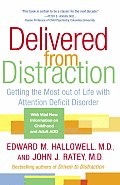
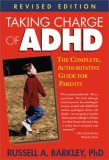



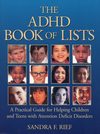

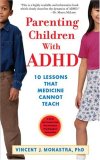
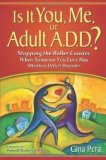

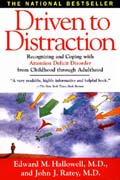
 Stanton and Archie Brodsky, of Harvard Medical School, detail the remarkable differences in amount, style, and outcomes from drinking in Temperance and non-Temperance cultures (there is a strong negative correlation between volume of alcohol consumed in a country and AA membership in that country!). They derive from these stark data and similar information healthy and unhealthy group and cultural dimensions to the drinking experience and how these should be communicated in public health messages.
Stanton and Archie Brodsky, of Harvard Medical School, detail the remarkable differences in amount, style, and outcomes from drinking in Temperance and non-Temperance cultures (there is a strong negative correlation between volume of alcohol consumed in a country and AA membership in that country!). They derive from these stark data and similar information healthy and unhealthy group and cultural dimensions to the drinking experience and how these should be communicated in public health messages.
 War fever ran high in the New England town to which we new, young officers from Plattsburg were assigned, and we were flattered when the first citizens too us to their homes, makes us feel heroic. Here was love, applause, war; moments sublime with intervals hilarious. I was part of life at last, and in the midst of the excitement, I discovered liquor. I forgot the strong warnings and the prejudices of my people concerning drink. In time we sailed for "Over There." I was very lonely and again turned to alcohol.
War fever ran high in the New England town to which we new, young officers from Plattsburg were assigned, and we were flattered when the first citizens too us to their homes, makes us feel heroic. Here was love, applause, war; moments sublime with intervals hilarious. I was part of life at last, and in the midst of the excitement, I discovered liquor. I forgot the strong warnings and the prejudices of my people concerning drink. In time we sailed for "Over There." I was very lonely and again turned to alcohol.